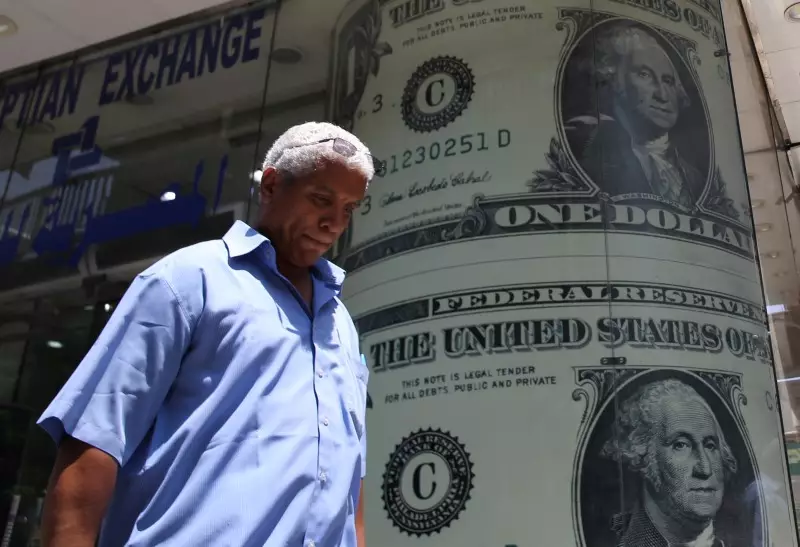The Resilience of the U.S. Dollar: An Analysis of Recent Economic Data and Geopolitical Tensions

The U.S. dollar has shown remarkable strength in recent weeks, propelled by a combination of positive employment data and global geopolitical uncertainties. This article delves into the numerous factors influencing the dollar’s performance, explores the implications for global currencies, and reviews the potential market shifts following upcoming economic indicators.
On Thursday, the Dollar Index, which measures the greenback against a select basket of six foreign currencies, reached 101.597—a striking 0.2% increase that positions it near a three-week high. The dollar’s recent surge can be largely attributed to the ADP private payrolls report, which revealed an unexpected increase of 143,000 jobs in September. This data point has fueled optimism surrounding the forthcoming nonfarm payrolls report, expected to exhibit similarly robust employment growth. In turn, these developments have stirred expectations regarding the U.S. Federal Reserve’s future interest rate policies.
Analysts at ING highlighted that the prevailing market sentiment leans towards a 50 basis-point cut in rates by year-end, particularly during the Fed’s November or December meetings. However, they caution that recent remarks from Federal Reserve Chair Jerome Powell have introduced a potential shift away from the anticipated dovish stance, implying enhanced risks for dollar adjustments in response to upcoming data releases. The market probability for another significant rate cut comes in at around 37%, as indicated by the CME Group’s FedWatch Tool, reflecting market participants’ uncertainty over the Fed’s trajectory.
In addition to strong domestic employment data, the U.S. dollar has also garnered support from escalating tensions in the Middle East. Following Iran’s ballistic missile assault on Israel, there has been a pronounced increase in demand for the U.S. dollar, traditionally viewed as a safe haven during times of crisis. As geopolitical uncertainties mount, investors often turn to the dollar as a shield against volatility in higher-risk regions.
This scenario illustrates how external factors can synergize with domestic economic data to bolster the dollar’s position. The intertwining of these elements means that the dollar does not operate within a vacuum but rather reflects a broader interplay of economic and geopolitical dynamics.
Contrasting the positive outlook for the U.S. dollar, the euro has recently faced headwinds, with EUR/USD trading at 1.1035—a 0.1% decline that brings it close to a three-week low. The downward trajectory is compounded by signs of waning inflation across the eurozone and mixed activity data. While some of this data exceeded expectations for September, the overarching picture continues to characterize Europe as being in contraction territory.
Furthermore, insights from Isabel Schnabel, a member of the European Central Bank’s executive board, have shifted expectations for future monetary policy. Her omission of long-held warnings about price growth control suggests that the ECB may also be contemplating additional rate cuts, paralleling the shifts observed in the U.S. monetary landscape.
Meanwhile, the British pound has also felt pressure, plunging 1% to settle at 1.3133. This drop was catalyzed by comments from Bank of England Governor Andrew Bailey, who signaled that the central bank may adopt a more proactive stance on rate cuts should inflation figures remain favorable. This turn of events has left the pound vulnerable to further declines, mirroring trends observed in the eurozone.
In Asia, the Japanese yen experienced a modest rally against the dollar, as USD/JPY edged up only 0.1% to 146.53. The pair’s subtle increase comes after Japan’s newly appointed Prime Minister expressed caution regarding interest rate hikes, alongside contradictory views within the Bank of Japan’s policymaking committee concerning the pace of future adjustments.
The interplay of impressive U.S. job growth, geopolitical uncertainty, and external monetary policy pressures reveals a complex narrative for the U.S. dollar and its relation to global currencies. With the impending nonfarm payroll report and potential shifts in Federal Reserve policy, market participants remain on alert for signs of further adjustments. In this fluid environment, the dollar’s continued strength may heavily influence exchange rates across the globe, shaping the trajectories of other currencies under the strain of their own internal and external challenges.





